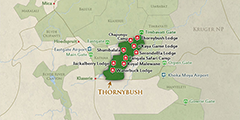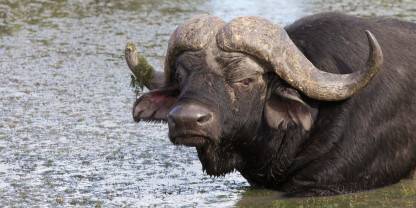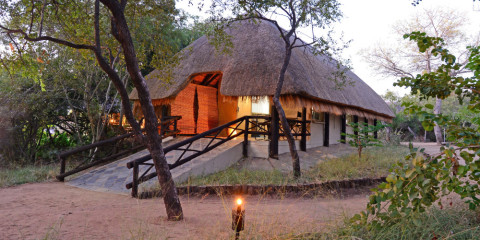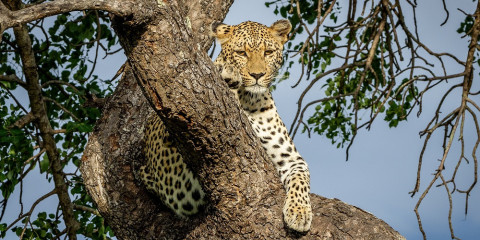Thornybush is a small private game reserve sharing an open boundary with Timbavati NR which has open boundaries with the world-famous Kruger Park. Animals can freely move in and out of the reserve, which is part of a very large ecosystem. Wildlife viewing is generally very good, but the thick bush makes off-road driving more limited than in the neighboring private reserves.

-
Best Time To Go
- May to September (Dry season)
-
High Season
- October to March (It is rarely busy)
-
Size
- 140km² / 54mi²
-
Altitude
-
445-579m /1,460-1,900ft
 View Photos
View Photos
 View Photos
+14
Photos
View Photos
+14
Photos
 Open Map
Open Map
Pros & Cons
- Good wildlife viewing with all of the Big Five present
- Day and night drives and walking safaris available
- Off-road driving in open vehicles
- Lodges catering to different budgets
- Wildlife less abundant compared to Sabi Sands and Timbavati
- High density of camps, so less exclusive
- Emphasis on checking off the Big Five species
Wildlife
All of the Big Five are regularly spotted at Thornybush, but wildlife is less abundant than in nearby Timbavati and Sabi Sand Game Reserve. There is a good chance of seeing black and white rhino and cheetah as well. Lions are regularly seen, and wild dogs move in and out of the property. Giraffe and a good variety of antelope are present as well.
More about Thornybush’s wildlifeScenery
The terrain consists of mixed woodland and open savannah with patches of tangled thickets and thorny bush, hence the name. The reserve is bisected by several dry riverbeds.
Weather & Climate
The summer’s Wet season (October to April) sees regular downpours and high temperatures. The heat starts to back off in March, signaling that the milder months of the winter’s Dry season (May to September) are near. The humidity and rainfall pretty much disappear in the drier months.
More about the weather and climateBest Time To Visit
If you visit Thornybush during the wetter months (October to April), you’ll be rewarded with the appearance of baby animals and migrating birds. The landscape, fed by the rain, will also be a rich green and the air nice and clear. But the heat is a burden, and the wildlife, in general, will be slightly easier to spot when the vegetation recedes in the Dry season (May to September).
More about the best time to visit



